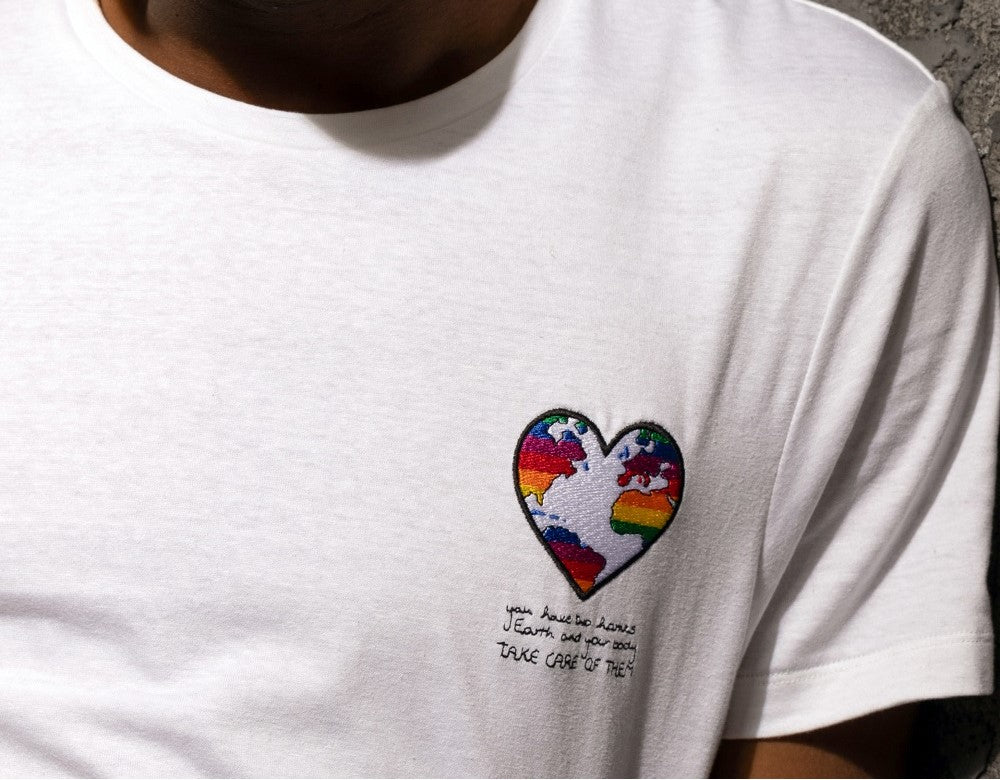Environmental footprint
Here is the Environmental Cost of our products (by the Ecobalyse tool, source Ministry of Ecological Transition/ADEME, April 2024) with the measurement used: environmental impact points.
JAGVI. Rive Gauche measures the environmental cost of all its products, over their entire life cycle (its raw material, its transformation, its transport, its use, its end of life) and compares it to an equivalent product.
A JAGVI T-Shirt. Rive Gauche has a cost of 672.90 points vs a Made in China T-shirt with a cost of 1270.00 points. Or 1.9 times less impact on the environment.
A JAGVI Shirt. Rive Gauche has a cost of 705.70 points vs a Made in Türkiye Shirt with a cost of 1379.00 points. Or 1.95 times less impactful for the environment.
JAGVI Pants. Rive Gauche has a cost of 1333.70 points vs. Trousers Made in Türkiye with a cost of 1813.90 points. That is 1.4 times less impact on the environment.
A JAGVI sweatshirt. Rive Gauche has a cost of 1381.90 points vs a Made in China Sweatshirt with a cost of 2205.30 points. That is 1.6 times less impact on the environment.
A JAGVI Jacket. Rive Gauche has a cost of 1960.70 points vs. a Jacket Made in Eastern Europe with a cost of 2852.20 points. Or 1.5 times less impact on the environment.
We recall that the integration of planetary limits into business practices constitutes an essential step towards a more sustainable and environmentally friendly economic model.
By setting ambitious and measurable goals, based on the best available scientific data, companies can contribute significantly to the preservation of the planet and the well-being of future generations.
This approach thus makes it possible to limit the impact of our manufacturing and your consumption of our products, and thus to fight against:
climate change,
the depletion of the ozone layer,
ocean acidification.
the erosion of biodiversity,
the modification of the fresh water cycle,
change in land use,
the disruption of the geochemical cycles of nitrogen and phosphorus.
the introduction of new human pollution into the biosphere
the increase in the presence of aerosols in the atmosphere.
JAGVI. Rive Gauche measures the environmental cost of all its products, over their entire life cycle (its raw material, its transformation, its transport, its use, its end of life) and compares it to an equivalent product.
A JAGVI T-Shirt. Rive Gauche has a cost of 672.90 points vs a Made in China T-shirt with a cost of 1270.00 points. Or 1.9 times less impact on the environment.
A JAGVI Shirt. Rive Gauche has a cost of 705.70 points vs a Made in Türkiye Shirt with a cost of 1379.00 points. Or 1.95 times less impactful for the environment.
JAGVI Pants. Rive Gauche has a cost of 1333.70 points vs. Trousers Made in Türkiye with a cost of 1813.90 points. That is 1.4 times less impact on the environment.
A JAGVI sweatshirt. Rive Gauche has a cost of 1381.90 points vs a Made in China Sweatshirt with a cost of 2205.30 points. That is 1.6 times less impact on the environment.
A JAGVI Jacket. Rive Gauche has a cost of 1960.70 points vs. a Jacket Made in Eastern Europe with a cost of 2852.20 points. Or 1.5 times less impact on the environment.
We recall that the integration of planetary limits into business practices constitutes an essential step towards a more sustainable and environmentally friendly economic model.
By setting ambitious and measurable goals, based on the best available scientific data, companies can contribute significantly to the preservation of the planet and the well-being of future generations.
This approach thus makes it possible to limit the impact of our manufacturing and your consumption of our products, and thus to fight against:
climate change,
the depletion of the ozone layer,
ocean acidification.
the erosion of biodiversity,
the modification of the fresh water cycle,
change in land use,
the disruption of the geochemical cycles of nitrogen and phosphorus.
the introduction of new human pollution into the biosphere
the increase in the presence of aerosols in the atmosphere.








